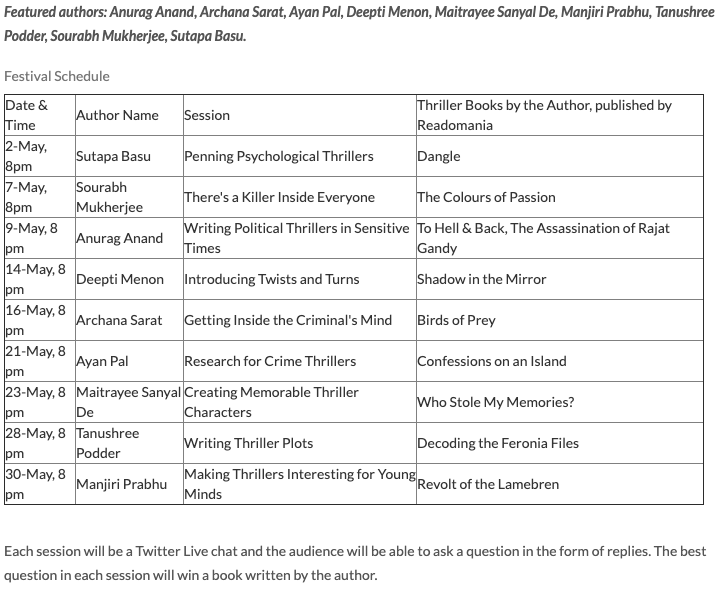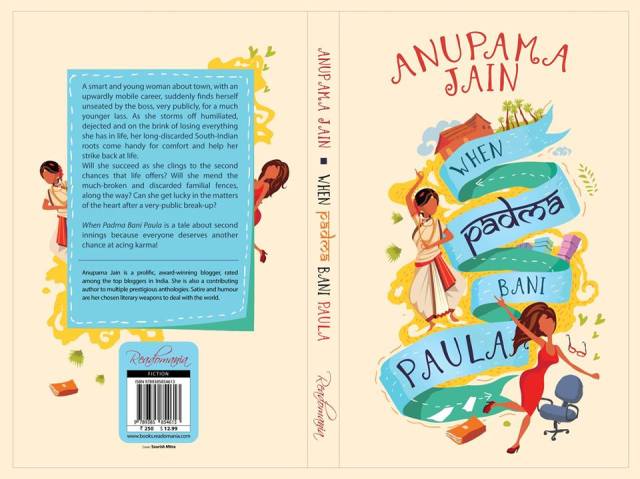
#Readomania #CrimeWritingFestival2019, Session 6 will be with Ayan Pal on 21 May 2019, author of ‘Confessions On An Island’.
The difference between search and research
By Ayan Pal
I began my tryst with research during Engineering, not for any academic purpose, but to fuel my passion for writing instead. I was working on a historical crime fantasy set in pre-Independence India and the UK and needed to get my facts right, no matter what.
My primary source of inspiration was my prized possession – The World Book Encyclopaedia, a gift from my mom. However, the golden gilded copies could not help me complete my tour de force. In fact, it was an utter failure. I was simply searching for whatever I could find out and trying to fit them into the plot thus making it lose its level of thrill.
Thus, despite have a rock-solid story, and dollops of imagination, a lack of ‘proper’ research made my writing cumbersome and unpalatable. In short, even the ‘world’ was not enough! Having learned my lesson the hard way, I used any and every opportunity thereafter to understand how research can help one elevate one’s writing and make it more thrilling, irrespective of whether it’s a novel, short story, speech, or even a post on Facebook!
Let me begin with an exercise to try and try to use a plot point through Potassium cyanide – a poison most of you would be familiar with for its many references across crime fiction.
Option 1: It was the 24-year-old Ponnuthurai Sivakumaran from Sri Lanka whose paved the path to avoid interrogation if captured for Tamil Tigers. His act of defiance was simple – swallow cyanide hidden within the uniform as a capsule. As he stumbled upon the ground, his mouth frothing, and beginning a slow painful death, a new militant hero was born.
Debrief 1: The above option is an example of using half-baked research by scrounging through undependable sources like Wikipedia. Even though there is documented evidence about the said militant having committed suicide, his exact age and the details of where the capsule was hidden is clearly a figment of the author’s imagination. The last sentence is an absolute flight of fantasy that is more of an ill-construed opinion not based on facts. For starters, cyanide causes almost instant death, thus making the sentence unrealistic as well as incorrect.
Option 2: An Indian man MP Prasad, a goldsmith, who committed suicide left a hastily scrawled note describing the taste of the fatal toxin, the Hindustan Times newspaper reported on Saturday. “Doctors, potassium cyanide. I have tasted it. It burns the tongue and tastes acrid,” he wrote, according to the paper.
Debrief 2: I have just two words to say here – dull and boring. No attempt has been made here of using a fact to elevate the writing in any which way. While this is an example of great research, where the source is also quoted, is it necessary? Would it have been better maybe had it been done in a subtler way, say an Indian character reading the Sunday Morning Herald in Australia suddenly exclaiming to his wife about the taste of cyanide, causing her to immediately stiffen and get an idea that could change their lives forever?
While the above two pieces of writing, though flawed can actually be appreciated for conducting some sort of research, let’s look at an example that became a social-media sensation for its thrilling tone and seemingly factualness.
Option 3: There was a very recent murder case in Australia where an Indian woman killed her husband by giving him crushed Apple seeds. She & her lover have been convicted and sentenced for 22 years & 25 years in prison. I never knew till now that apple seeds contain Cyanide. I searched for the info & was surprised to find that apple seeds do contain Cyanide. This is also one reason why insects hardly hit an apple crop. They know instinctively maybe. Please ensure that the seeds are removed before eating apples. Especially children should not be given a whole apple. Instead cut, remove the seeds before giving it to them. You can google for the veracity of my observation if you have doubts. And do spread the message around to as many people as you can.
Debrief 3: This post is based on an actual case of cyanide poisoning in Melbourne, Australia where Sofia Samand murdered her husband Sam Abraham along with her former lover Arun Kamalasanan. On 21st of June 2018, the Supreme Court jailed Kamalasanan for 27 years and Sam for 22 years. Shocking, isn’t it? But not entirely true. You see, the actual incident had the woman giving her husband orange juice laced with cyanide. However, this half-truth looks almost believable with Google likely to throw up numerous results about the fact that apple seeds do contain poison. Imagine writing a book or delivering a speech to be recorded for posterity (say a TED Talk) based on fake news. What would that make people think about you?
The need to impregnate a sense of expertise and authority in the reader’s and/or listener’s mind through the use of factual data is a must, provided you vary of sources of data and actually speak with experts if you cannot experience it yourself to ensure you get the facts right no matter what.
In my novel ‘Confessions on an Island’, I have used vivid descriptions as well as dialogs to share a whirlpool of facts that not just help you understand the settings better, but also present clues that you will be able to relate with when the denouement presents itself. It being a psychological thriller, and with me being an Engineer and not doctor, I decided against doctoring the reactions of the characters and/or basing them on what I was most likely to do.
They were instead based by researching about patients who have faced similar mental issues, interacting with people with disorders like Bipolar, and actually feeling some of the many things that the characters faced. There were research and facts, there were various sources, but they were also used in sporadic amounts to ensure the content never overwhelms the countenance.
In my opinion, research is like the thread that holds the pearls of any story together, one that stays in the background and lets the real assets – the story, characters, plot, and twists shine. It is a foundation upon which the greatest of stories can be built. The moment it tries to become a pearl in itself and stand alone as a tour de force, you will end up losing the sheen in your writing, causing the carefully collected pearls to needlessly scatter.
The next time you try and pursue writing your next story, speech, or even that social media post, may the force of research be with you. Amen!






One thought on “When Ayan Pal Talks About The Difference Between Search And Research”